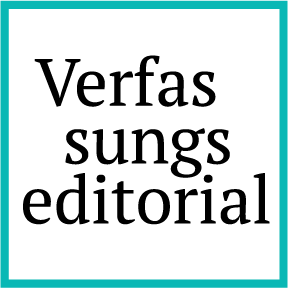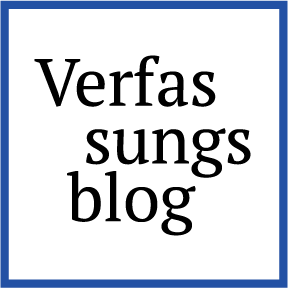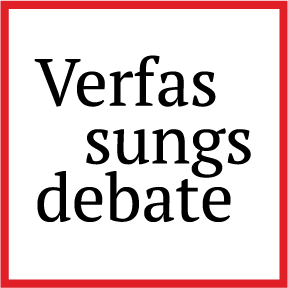Out of Sight, Out of Mind
Return Hubs and the Externalisation of Limbo
Last week, the Civil Liberties, Justice and Home Affairs Committee (LIBE) of the European Parliament debated a Draft Report and a series of amendments to the Commission’s Proposal for a Return Regulation. Presented by the Commission in March 2025, the Proposal seeks to increase the EU’s return rate, which has not exceeded 20% in recent years. In 2024, for instance, out of 453,380 third-country nationals ordered to leave the EU, only 110,385 individuals returned to their countries of origin. In order to close this gap, the Proposal envisages greater harmonisation amongst national return policies, mutual recognition of return decisions across the EU, and an expansion of Member States’ enforcement powers, including extending the maximum duration of pre-removal detention from 18 to 24 months. Crucially, the Regulation also legalises the possibility of sending migrants to return hubs located in third countries outside of the EU, with the exception of unaccompanied minors and families with minors. In the eyes of policymakers, the return hub model constitutes a key tool for addressing the situation of rejected asylum seekers, who cannot be removed to their countries of origin for legal or practical reasons. By transferring the non-removable migrants to return hubs in third countries, EU Member States would be able to bypass the legal and practical constraints preventing removal to migrants’ countries of origin. However, outsourcing situations of non-removability to return hubs outside of the EU offers neither a meaningful long-term solution nor an adequate response to the complex needs of non-removable migrants. Rather it risks entrenching their marginalisation, whilst eroding migrants’ human rights protections and generating considerable uncertainty for individuals held at these locations.
Non-removability as a long-standing policy issue in the EU
The treatment of non-removable migrants, who cannot be removed to their country of origin due to legal and practical barriers impeding the enforcement of removal, has been a recurring topic of policy debate since the late 2000s. The reasons for situations of non-removability are varied and complex. On the one hand, removal may be barred on human rights grounds, notably if removal entailed a risk of refoulement. On the other hand, practical barriers can delay or permanently impede removal. Common issues in this regard relate to problems in establishing the returnee’s identity ahead of removal, which requires the cooperation of the country of origin and the returnees themselves. Particular complexities surround cases of de facto statelessness, where individuals may be unable to prove their nationality or are denied the rights derived from it.
As the current EU Return Directive fails to address such scenarios in a comprehensive manner and merely provides for the suspension of removal proceedings, the legal situation of unreturnable migrants is primarily regulated at the national level. In the absence of any clear guidance at the supranational level, EU Member States have developed a range of diverging approaches, creating a highly fragmented legal landscape with differing rights granted to non-removable migrants. It is well documented that non-removable migrants commonly find themselves in legal limbo, generated by successive decisions to suspend removal, and experience high levels of precarity, whilst their immigration status remains irregular. Access to regularisation for these individuals remains a matter of national discretion, as no regularisation duty arises from the existing EU Return Directive, as reaffirmed by the CJEU in the recent Changu judgement.
The lack of durable policy solutions for non-removable migrants, particularly for those deemed “undesirable” by EU Member States, has long been lamented by scholars. Limited regularisation prospects, coupled with restricted socio-economic rights not only engender considerable precarity for migrants, but render them highly vulnerable to exploitation and to human rights violations. However, rather than exploring regularisation policies as a means of addressing protracted situations of non-removability, the Commission’s proposal for Return Regulation bets on externalisation as a means of tackling the issue of non-removability.
Return hubs as a means of making non-removable migrants removable
The Proposal effectively paves the way for an externalised returns system operated through the establishment of return hubs in third countries outside the EU. According to Article 17 of the proposed Regulation, Member States would be able to remove irregularly staying migrants to a third country with which an agreement or arrangement has been concluded. This reflects an expansion of the concept of country of return per Article 4 of the Proposal. Under this provision, the country of return is no longer limited to the returnee’s country of origin, a transit country, or another third country to which the individual agrees to return to voluntarily. Instead, migrants could also be transferred to return hubs in a third country, following the conclusion of a corresponding agreement or arrangement. Based on this reconceptualization in line with externalisation logics, migrants who were previously unreturnable to their country of origin would become removable, albeit at a high cost, both from a moral and financial standpoint.
In practice, under the new Proposal, migrants could be sent to a country with which they may not have any existing connection or links whatsoever, whose language they likely do not speak and in which they have never previously set foot. Return hubs also carry significant potential for human rights violations, including arbitrary detention and chain refoulement, and risk undermining existing protections through strategic distance-creation, which obscures legal responsibilities and reduces accountability for resulting breaches. Moreover, crucial questions regarding the fate of permanently non-removable migrants held at return hubs remain unanswered, as explained below.
The fate of non-removable migrants held at return hubs
With essential details left to be determined by the agreement with the third country, the Commission’s Proposal to legalise return hubs mostly follows an “out of sight, out of mind” rationale with respect to non-removable migrants. In particular, the proposed Regulation fails to set out guidance or minimum safeguards for the treatment of non-removable migrants, who become permanently stranded in the third country. Article 17(2b) merely stipulates that the “conditions for the stay of the third-country national in the third country” shall be set out by the agreement, including the “respective obligations and responsibilities of the Member State and of that third country”.
Additionally, Article 19(2c) of the Proposal for a Return Regulation provides that the agreement shall address the consequences of cases in which onward removal is not possible. While this clause recognises the possibility that some migrants may remain non-removable even after being transferred and held at a return hub, it leaves open key issues, such as access to regularisation and employment, as well as the question of permanent resettlement, either in the EU or in the third country. These omissions and their deferral to future negotiations expose the EU’s limited ability to unilaterally impose such terms, whilst third countries ultimately retain the sovereign power to exclude non-removable migrants from regularisation and/or from their domestic labour markets.
Failure to address these issues meaningfully, however, risks reproducing the very limbo associated with situations of non-removability and would merely shift it from EU Member States to third countries without providing any long-term solution. Non-removable migrants inside the EU currently benefit from crucial safeguards whilst their removal is suspended, such as access to healthcare, family unity with family members present in the Member State, and the provision of special support for vulnerable individuals (Article 14 of the current EU Return Directive and Article 14(6) of the Proposal for a Return Regulation). However, this would not be the case for migrants who become non-removable while held at return hubs.
Where repeated attempts to remove individuals from return hubs to their countries of origin have failed, the sole path out of this limbo envisaged by Article 17(2c) of the proposed Return Regulation is voluntary return to the migrant’s country of origin or another country willing to accept them. The uncertainty regarding the fate of the non-removable migrants in the third country and their living standards there is likely to affect migrants’ decision-making, with some potentially feeling return is the only viable option – even despite persisting refoulement concerns. In the literature such scenarios are captured by the concept of constructive refoulement, which refers to indirect attempts by states to coerce migrants to leave, for instance by inflicting material destitution or denial of protection. Whilst the concept has previously been associated with Australia’s offshore processing centres in Nauru, its significance for the EU’s future return hubs model does not seem far-fetched, as reports from the Italian repatriation centres in Albania show. Following legal challenges, Italy suspended use of these off-shore centres for the processing of asylum claims and repurposed them into removal centres in April 2025. Between April and June of this year, 65 critical events were recorded, averaging nearly one incident per day and including extensive self-harm amongst detainees, together with 10 incidents of attempted suicide. In light of these reports, it is not excluded that some migrants held at return hubs according to the new Proposal might see no other option than to risk returning to a country where they fear for their safety.
The Draft Report of the LIBE Committee of the European Parliament
The Draft Report of the Committee (LIBE), which encompasses a total of 199 amendments, shows some awareness of the human rights criticisms levelled at the Commission’s Proposal, but shies away from setting aside the idea of return hubs altogether. More broadly, the Draft Report seeks to maintain the current 18-month cap on the maximum period of detention and reaffirms voluntary return as a priority over forced removal. Additional amendments strengthen returnees’ access to legal assistance and propose the creation of a centralised monitoring system for all removals, including those to third countries. Regarding return hubs, the Draft Report notes that this model “reflects a broad desire among the European Union” and could serve as a “valuable incentive to encourage voluntary returns or cooperation”. In order to address existing concerns relating to fundamental rights, which haven’t “gone unnoticed” according to the report, Amendment 11 clarifies that corresponding agreements with third countries would “constitute an implementation of Union law for the purposes of Article 51(1) of the Charter of Fundamental Rights of the European Union”, which would guarantee the application of the EU Charter. Moreover, Amendment 88 introduces a hierarchy among the possible countries of return under Article 4 of the Proposal for a Return Regulation, ensuring that removal to migrants’ country of origin remains the priority. By contrast, removal to return hubs located in a third country “shall only be considered for those who, despite adequate support, do not return voluntarily or cannot be forcibly returned to one of the other countries of return in accordance with the order of priority set out in Article 4(3)”.
Conclusion
If adopted in the final Committee Report, the reference to Article 51(1) of the EU Charter would constitute a critical safeguard against human rights violations and potentially enhance accountability. Yet, from a practical and logistical standpoint, it will remain challenging for migrants held at these locations to access justice and litigate against human rights breaches suffered at return hubs, which, per design, are meant to operate as legal blind spots. Beyond this, the Draft Report fails to address the long-term fate of non-removable migrants. If anything, it confirms that return hubs will likely become the new locus of limbo for these individuals, in turn exacerbating the risk of constructive refoulement.
Outsourcing the issue of non-removability to third countries only generates further harm and uncertainty for migrants, as the current Italy-Albania arrangement demonstrates. Moreover, agreements for return hubs are unlikely to actually close the deportation gap, as they tend to be limited in scale and do not address the situation of non-removable migrants already living in EU Member States. Therefore, EU policymakers should explore alternative approaches that expand regularisation routes for non-removable migrants in the EU and harmonise national standards in this area.
FOCUS is a project which aims to raise public awareness of the EU Charter of Fundamental Rights, its value, and the capacity of key stakeholders for its broader application. Views and opinions expressed are however those of the author(s) only and do not necessarily reflect those of the European Union or the European Commission. Neither the European Union nor the European Commission can be held responsible for them.





